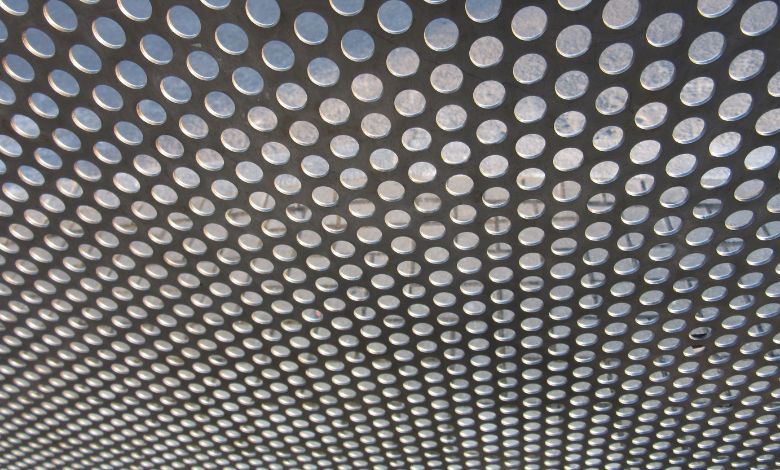Discover what careers would be impossible with trypophobia and how to navigate professional choices with this condition.
Have you ever felt a shiver down your spine at the sight of clusters of tiny holes or repetitive patterns? If so, you’re not alone. Trypophobia, the aversion to such patterns, is a surprisingly common condition, and for some, it’s more than just a fleeting discomfort. It’s a real obstacle that can affect daily life, including career choices. Interestingly, stress influences workplace productivity in similar ways, as both trypophobia and stress can create barriers to focus and efficiency. But here’s the good news: understanding your triggers and planning around them can open up possibilities rather than close doors. Let’s explore how trypophobia intersects with the professional world and how you can navigate it like a pro.
Article Breakdown
What Is Trypophobia, and Why Does It Matter in the Workplace?

Before diving into specific careers, let’s break down what trypophobia is and why it might influence your professional choices. Trypophobia isn’t officially classified as a phobia in major diagnostic manuals, but that doesn’t make it any less real. For many, it triggers intense feelings of disgust, discomfort, or even panic. Think honeycombs, lotus seed pods, or the pores on certain plants, all seemingly harmless but potentially overwhelming for someone with trypophobia.
In a workplace context, these triggers can appear unexpectedly, on computer screens, in product designs, or even in the natural environment around you. A triggering visual might derail your focus, drain your energy, or make it challenging to complete tasks. This is why understanding how trypophobia intersects with various careers is crucial for finding a job where you can thrive.
Careers That Could Be Challenging for Someone with Trypophobia
Let’s be real: every job has its quirks, but some careers are undeniably more prone to trypophobia triggers than others. Here’s a closer look at the fields where those little clusters of holes might pop up (pun intended):
1. Biological and Natural Sciences
Working as a biologist, botanist, or zoologist often means closely examining natural patterns. Think about studying fungi, coral reefs, or microscopic organisms. These environments are rich with the kinds of visuals that could set off trypophobia.
Real Talk: When I first interned at a marine biology lab, I vividly remember the day we analyzed coral samples under a microscope. I’d never realized how textured and hole-ridden coral could be, and how uneasy it made me feel. That was the moment I knew this path wasn’t for me.
2. Medical Professions
Dermatology, surgery, and certain medical imaging roles often involve exposure to patterns on skin or internal organs that can trigger trypophobia. Even tasks like reviewing rashes, burns, or clustered skin conditions could be overwhelming.
Example: Imagine being a dermatologist examining a patient’s skin condition with magnified tools. If your immediate reaction is physical discomfort, it’s going to impact both your effectiveness and your emotional well-being.
3. Culinary Arts
From honeycombs to strawberries and Swiss cheese, food preparation often involves working with natural patterns. A chef or food stylist might find it hard to deal with such textures daily.
It’s like being a painter who can’t stand the smell of paint. The constant exposure becomes not just unpleasant but unworkable.
4. Art and Design
Graphic designers, textile creators, or even architects often work with patterns. If your job involves creating or analyzing textures that include repetitive shapes, it could pose a significant challenge.
I once collaborated with a textile designer who admitted that working on polka dot patterns triggered her trypophobia. She found ways to delegate that part of the process, but it wasn’t easy.
5. Construction and Architecture
Certain materials, like perforated panels, insulation, or designs that feature clustered elements, might be triggering. Construction site visuals or 3D architectural models could also include patterns that are hard to avoid.
Tip: If you’re drawn to architecture but worry about this, consider specializing in areas that don’t require as much hands-on work with physical materials.
Careers That Are Trypophobia-Friendly
The good news? There are plenty of careers where trypophobia is unlikely to rear its head. Here are a few options:
1. Writing and Editing
Working with words rather than visuals ensures you can control your environment. Whether it’s journalism, copywriting, or editing, this field allows for flexibility in avoiding triggers.
2. Technology and Software Development
While UX/UI designers might encounter some pattern-heavy visuals, most roles in tech, like coding or data analysis, are focused on logical structures rather than visual ones.
3. Education and Training
Teaching in areas unrelated to biology or art (think literature, math, or history) offers a low-risk environment for trypophobia triggers.
4. Administrative Roles
Office-based jobs like HR, accounting, or project management involve limited exposure to visual patterns, making them safer bets.
How to Manage Trypophobia in the Workplace
Even in the most trypophobia-friendly careers, unexpected triggers might still crop up. Here’s how to handle them effectively:
1. Know Your Triggers
Spend time identifying what patterns or visuals set off your discomfort. The more you know, the better you can prepare.
2. Customize Your Workspace
Create an environment where you feel in control. For example, avoid decor or wallpapers that feature repetitive patterns, and consider using a screen filter if digital visuals are an issue.
3. Open Communication
If you’re comfortable, talk to your employer about your condition. Many workplaces are open to reasonable accommodations, whether it’s modifying certain tasks or providing alternative tools.
4. Develop Coping Mechanisms
Techniques like mindfulness, breathing exercises, or even stepping away for a quick break can help you reset when faced with a triggering situation.
5. Seek Professional Support
A therapist specializing in phobias can offer tailored strategies to help you manage your reactions and build resilience over time.
How I Navigated My Own Trypophobia Journey
Let me be candid for a moment. When I first realized I had trypophobia, I thought it was a quirk, something to laugh off. But as I progressed in my career, I encountered moments where it genuinely impacted my ability to focus and perform. Like that coral sample incident in the lab or the time I reviewed a honeycomb-themed design for a campaign.
These experiences taught me two things: first, it’s okay to feel limited by something beyond your control. Second, limitations don’t define your potential, how you work around them does. By choosing paths that aligned with my strengths and learning to manage my triggers, I built a career that’s both fulfilling and free from unnecessary stress.
Encouragement for Your Journey
If you’re grappling with trypophobia and wondering how it might affect your career, take heart. You’re not alone, and you’re certainly not without options. The key is to be honest with yourself about your needs, proactive in seeking solutions, and confident in your ability to adapt.
Remember, every challenge is an opportunity in disguise. By understanding your triggers and crafting a career path that aligns with your well-being, you’re not just managing your trypophobia, you’re turning it into a stepping stone for success. And that’s something to be proud of.
Key Takeaways
- Reflecting on your career goals and potential triggers.
- Researching roles that align with your strengths and comfort zones.
- Seeking support if you need help navigating your options.
Useful Resources:
1. Medical and Biological Sciences: Medical fields such as dermatology and biology often deal with images and specimens containing clustered hole-like patterns, which may cause discomfort for those with trypophobia.
2. Design and Architecture: Designers and architects work with patterns, such as perforated materials, that can trigger reactions in individuals with trypophobia.
3. Art and Photography: Photographers and artists who focus on macro photography or abstract art may frequently encounter subjects with hole-like patterns, causing distress to trypophobic individuals.



